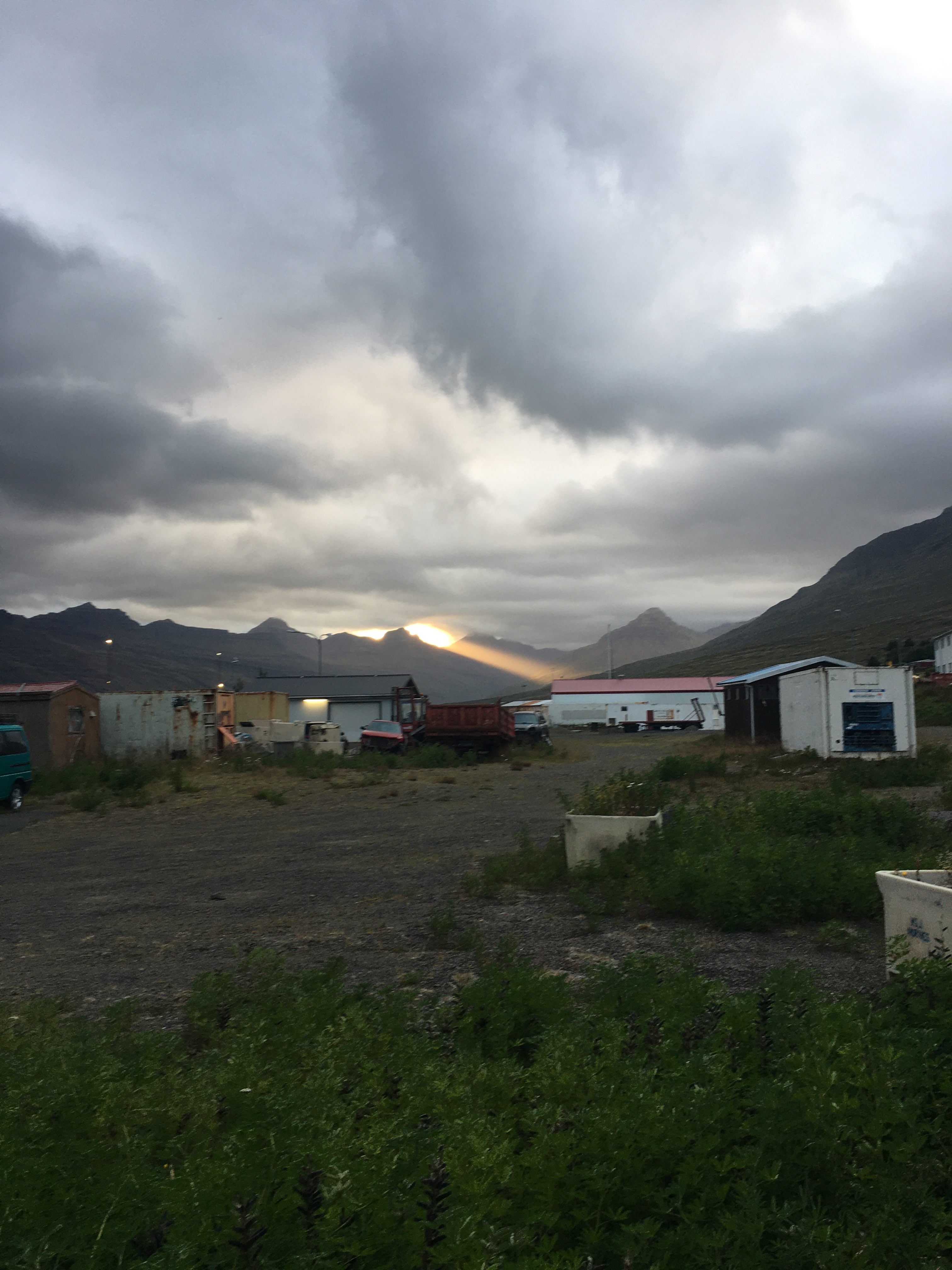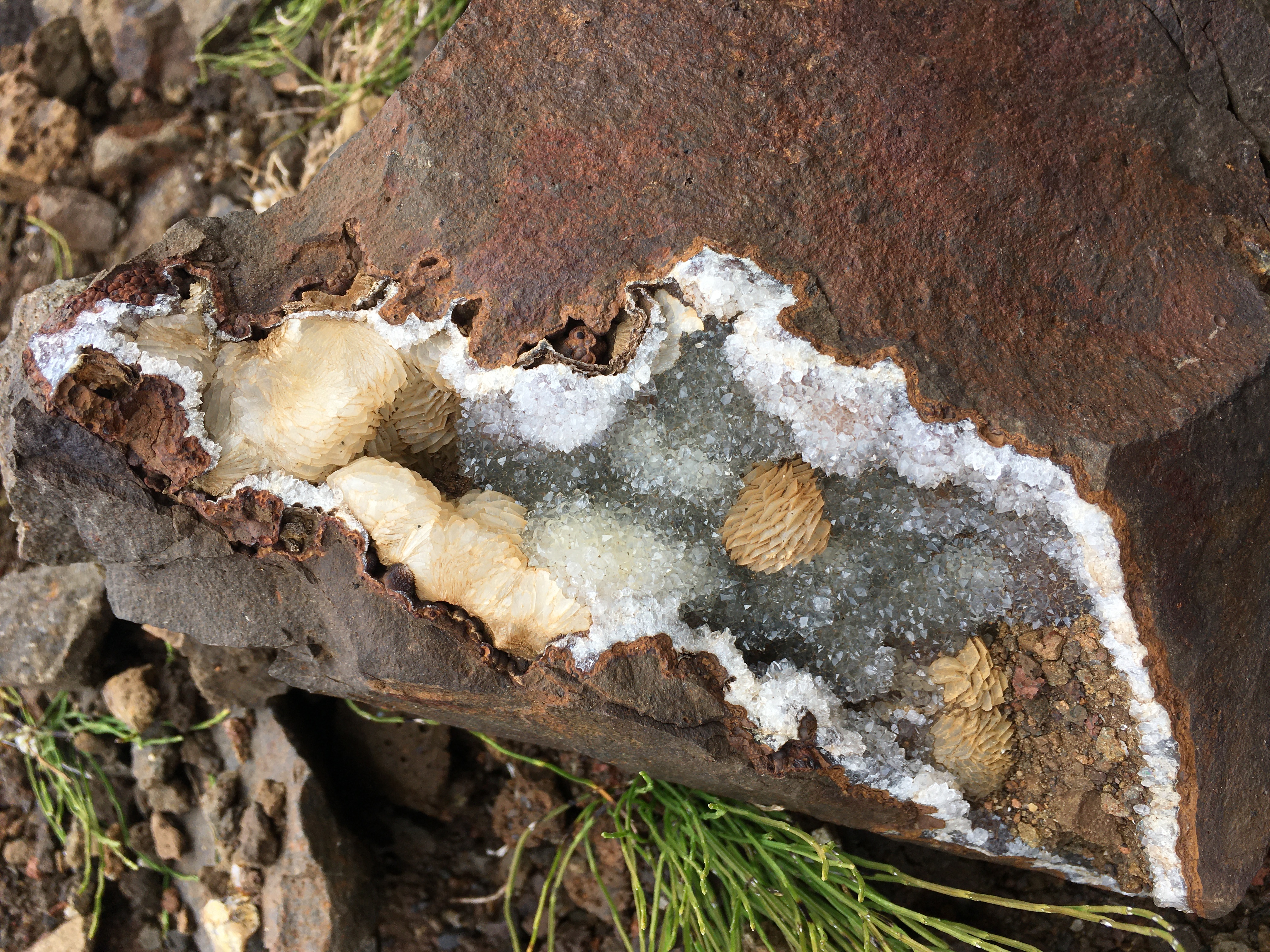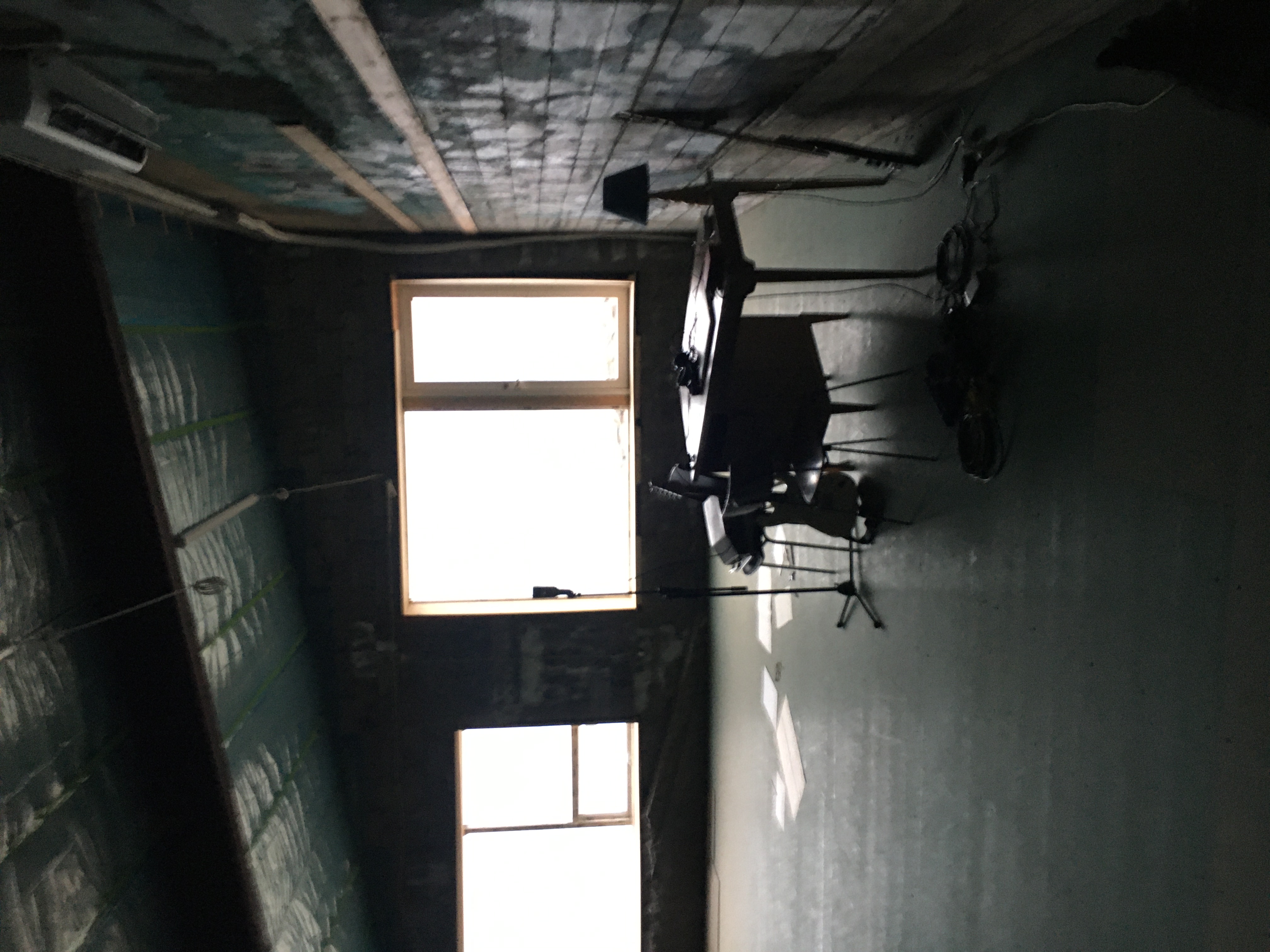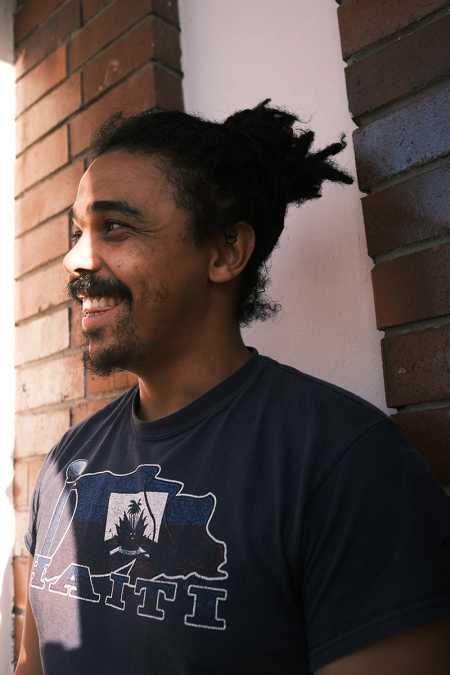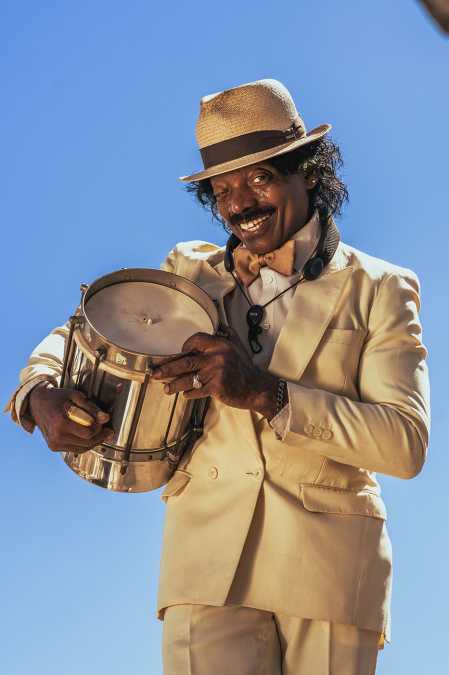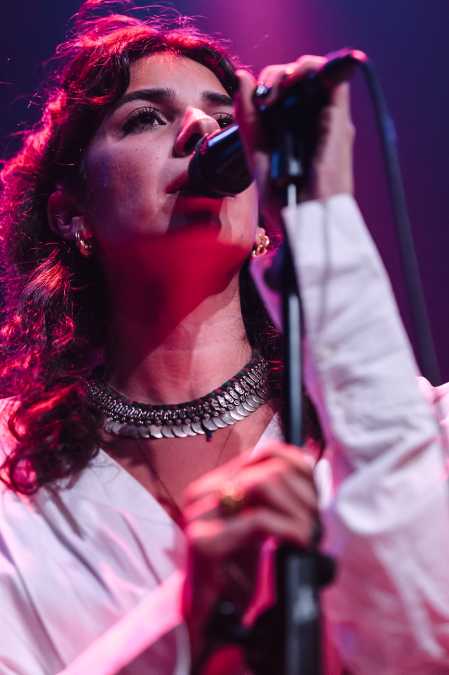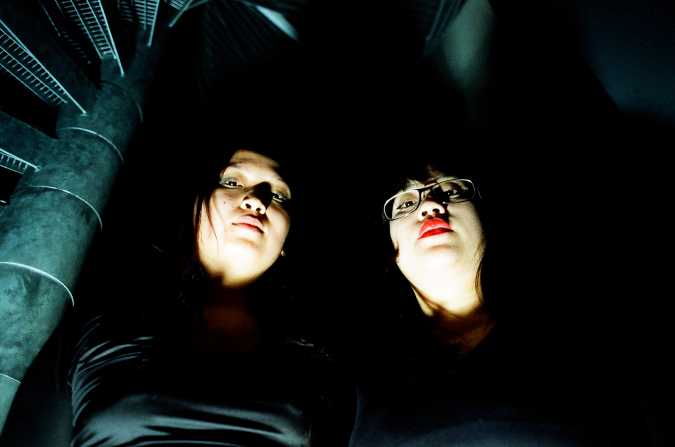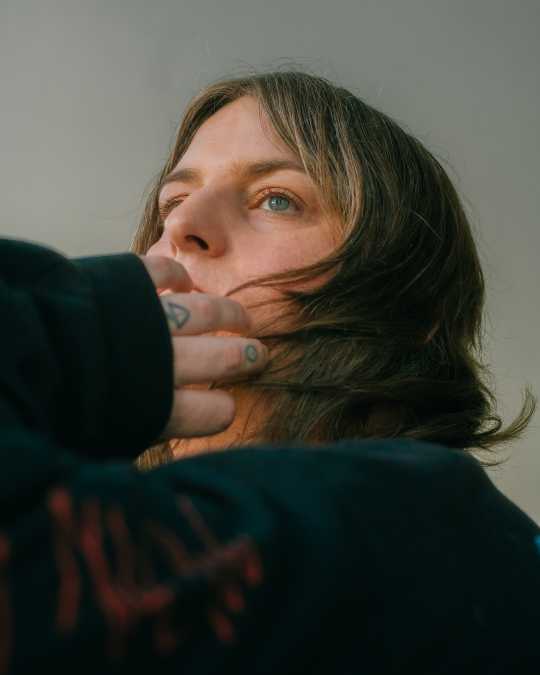Interview: Kathryn Mohr
Recently, we’ve visited the Eastern region of Iceland for an extensive chat with our 2025 COSMOS Embassy Seyðisfjörður Community Radio. This time, we’re moving a mere 100km further to Stöðvarfjörður, another fisher village in East Iceland that doubles as a hideout for creative minds. Here, Kathryn Mohr, an experimental songwriter from the Bay Area, has recorded her latest album, Waiting Room. (Pitchfork loves it, and so do we.)
The music of Kathryn Mohr exists in a liminal space of auditory dissociation. Whether led by guitar or synth, her art chases the ephemeral nature of humanity through dark ruminative songs. At times whispered, at times sung in melodic lament, Mohr’s lyrics draw from non-linear memories and dream-like surroundings (of which her Icelandic refuge surely had more than enough).
In anticipation of Kathryn’s performance at Le Guess Who? this November, we checked in with her to learn more about how her introspective time in rural Iceland has helped her conjure up these sounds of hypnagogic awe and beauty.
Words by Julian Brimmers. All photos were taken by Kathryn Mohr, except the one that shows her at her work station, which was shot by Vid Levar.

It’s already been announced, so I can say how much I’m looking forward to your performance at Le Guess Who? this year. Have you toured Europe before?
No never, this will be my first time.
We’re going to talk about recording you’re latest record pretty much in isolation. But how about the live performance, what does that look like at the moment?
Right now, it's just me solo. I enjoy playing live alone. I have different loops and things that I set up to give my songs some of the atmosphere that my recordings have. I really present just the songs, but my voice is a lot louder when I play live. People have said that it's very different. Kind of a different perspective on the songs.
How is it different?
It's more expressive, less of one layer, maybe? People have said that my voice is very much in the mix on the records, it’s almost another instrument. When I play live, it's almost just me, and my guitar, and singing. For me, it’s very vulnerable.
Many people have pointed out this aspect of you staring into the abyss, so to speak, moving towards things that scare you in your art. For cathartic effect, I suppose?
Yeah, it's like that, but even more so when it’s face to face. In my recorded music, it's more about creating a world that somebody can move through. When it's live, you know, people see me, and I see the audience most of the time, as as long as the lights are not too bright. It's more personal in a way.
Lately, I've been walking around to your music a lot. For some reason, I rarely sat down with it. While walking, it's very immersive.
Yeah, it makes for a different experience. I also love walking around to music. That's one of my favorite ways to listen to a new album that I've never heard, as opposed to, like, laying down or sitting, because there are so many connections my brain makes with the sound and what I'm looking at, like the plants or the houses or the way something looks, or a stranger passing by. I think it's a beautiful experience. So it’s nice to hear it works for you in that capacity.
How important are the spaces that you make music in? Not just for the performance aspect of it, but for the recording? As far as I know, you have recorded your records in very different places. So how important is it to be elsewhere to finish a record?
The thing is, my whole recording setup is portable. I brought everything from home to Iceland, where I recorded Waiting Room. I didn't use a studio there. I kind of set up my own little space that feels like home. But obviously, when I'm in a different place, I'm able to focus more and make new connections with my brain. Sometimes I write lyrics in the moment, and those are heavily based on where I am, usually.
How was that for Holly, did you also bring all of your stuff to where you recorded in New Mexico?
I went to New Mexico with a friend of mine, Madeline Johnston, who is the artist Midwife. She has a home studio just like mine. The songs were written at home, and then I brought them to her for us to finish them and do the final recordings. A lot of the recordings I kept from the original demos that I did at home. Some of them we re-recorded with Madeline at her place, and she added aspects of it that came to her. We did that because both of us had never been recording vocals in a proper studio. We wanted to try that. So we called up this one studio. It was an interesting experience. I didn't necessarily like it, but it is good to have new experiences and to experiment.
I assume that place was pretty much right in the desert then?
Yeah, I love deserts. And I have always loved New Mexico. It’s a place I went to when I was very young. We were in a rural area, in an eerie desert, like, nothing around. It was like a 30 minute drive to the nearest town to get groceries. For me, that's very unusual, because I live in a city. There's something about the desert that is very beautiful to me.
It sounds like you’re drawn to vast, not very hospitable places? I mean, that must’ve been kind of the same in Iceland? Just the complete opposite, climate-wise.
In Iceland, it was about a two-hour drive to the nearest grocery store (laughs). There was no food in the town. It was very, very far away. It’s kind of amazing how I ended up recording my two albums both in these far off places. I was just naturally drawn to do that. I found that, when I'm far away, it's easier for me to focus, and think, and step outside of myself. And to get in this headspace of creation. Which is probably the most important and hardest part of making music for me, you know. Working with my brain and being in the space where creation feels like it has to happen.
It's so hard to create these pockets in an everyday routine and in your regular environment.
And then my days in Iceland, yeah, it was kind of like in the morning I woke up and immediately went to the factory {where the residency took place}, and started working. I basically worked until my body started hurting from the way I was sitting, and my head was exploding. Like, man, I can't do this anymore. I just got exhausted. And then I went out and I just walked around and did not think about the music till the next day. Sometimes it was six hours of working. Sometimes it was only one hour. Sometimes it was two sessions in one day, one at night. It was all just based on what I could do.
Let’s backtrack a little. Can you let me know how you actually found this place? Le Guess Who? and COSMOS are partnering this year with these people from Seyðisfjörður, which I think is close to Stöðvarfjörður, where you stayed for your residency. They also told me about this recording studio and music residency in a near-by town. It just sounds like East Iceland offers a lot of space to artists.
I heard about it from a friend of mine who does physical art, a lot of canvas work. I'm kind of the type of person, to like, when somebody tells me something was good and sends me the link, I will go with it and see how far it takes me.
It's called the Fish Factory. She said it was wonderful. There's no structure. You just go there and you can do whatever you would like in this beautiful space. I didn't really have Iceland in mind, although it is a place that I've always wanted to visit. They accepted me and so I went. There is a really amazing studio there, which is made by the person who runs the residency. But he was on a trip while I was there, so I could not use the recording studio.
He did show it to me before he left, though. It's a beautiful studio. So many instruments and wooden walls, he made something really outstanding.
So once you set up shop in this completely different environment, did it live up to the promise? Were you able to create the headspace you were looking for?
Well, it took me time. Because I was there for only one month, I first tried to work with material that I had brought from home. But somehow it just wasn't sounding good, and I wasn't really getting anywhere. So there was a point in the middle of the month, where I said to myself, I don't have to make music while I'm here. I can just do whatever I'd like. I can just enjoy the landscape. I don't have to do anything. As soon as I let myself do whatever I wanted, I didn't even touch those old songs. All of a sudden I felt like I wanted to write new songs.
The album sure feels like it was conceived and, for the most part, finished in one place, one physical context. Do you think it would have sounded different if you had written sketches in Iceland, and finished it back home in the Bay Area?
Sure, but for factual reasons. Most of the sounds and atmospheres on the album came from walking around in the nature and recording with my field recorder. I can't get that in in Oakland. Very different sounds that they have here. It would not have been the same album. Maybe the songs themselves would probably have grown up to be pretty different in the end results, if I did it in Oakland.
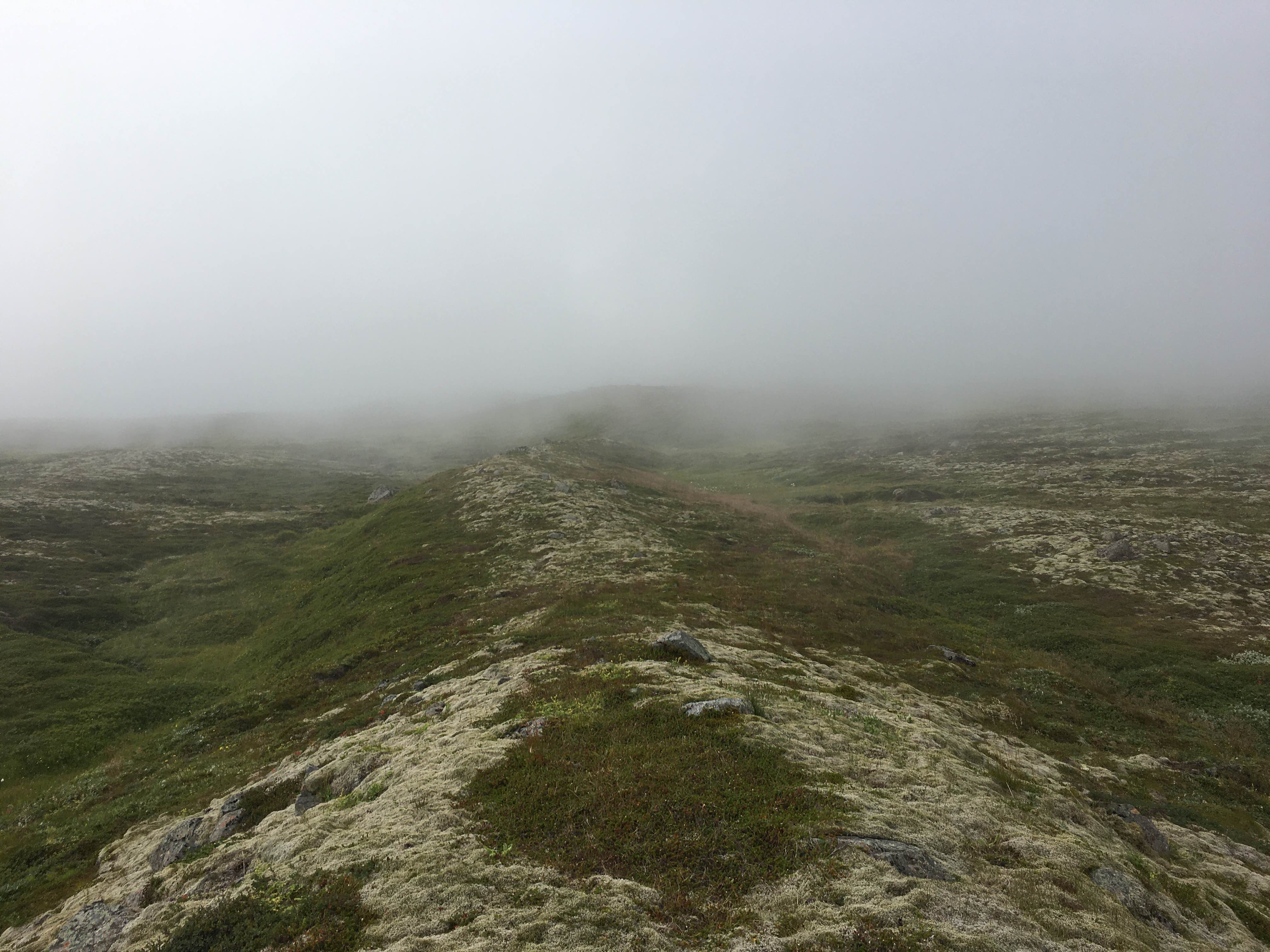
Did you mostly work in isolation, or were there other artists, other people as well?
There were six artists total, but I was the only musician. All the other artists worked in one big room where they would be painting. I worked alone in this separate room to do my recordings.
They were all very nice people, but I didn't really become close with them. So I was very much just there, you know, letting myself have my time with myself, which is something I do enjoy. I love being alone, and I loved the space. Just thinking while I walk alone. I enjoy the quiet of not talking, because I am very introverted. It's a very small town, and you see very few people there.
I can only imagine that this intensity and being alone with your thoughts and music only increased because of how, in your music, you’re going to not necessarily dark, but often eerie places. With the images you conjure up, sound-wise and in your lyrics.
Yeah, I feel like I've lived most of my life in a pretty intense headspace. And one thing that's always the antidote to that is nature. In Iceland, the nature was absolutely beautiful, like a massage for my brain to look at the rocks and walk up the stream. I think it was almost healthy, a healthy balance of intensity and absolute beauty in the fog. It's just like this fisher village. There's the fjord, there's rocks, that's pretty much it. There's one road that went through and they had a bicycle, which I fixed up. It didn't quite fit me, but I wrote it seven miles to the next town. And all along it's pretty much only these beautiful rocks. The fog is always coming in from the fjord. I would climb up into the fjord. The water is filled with jellyfish and is so clear.
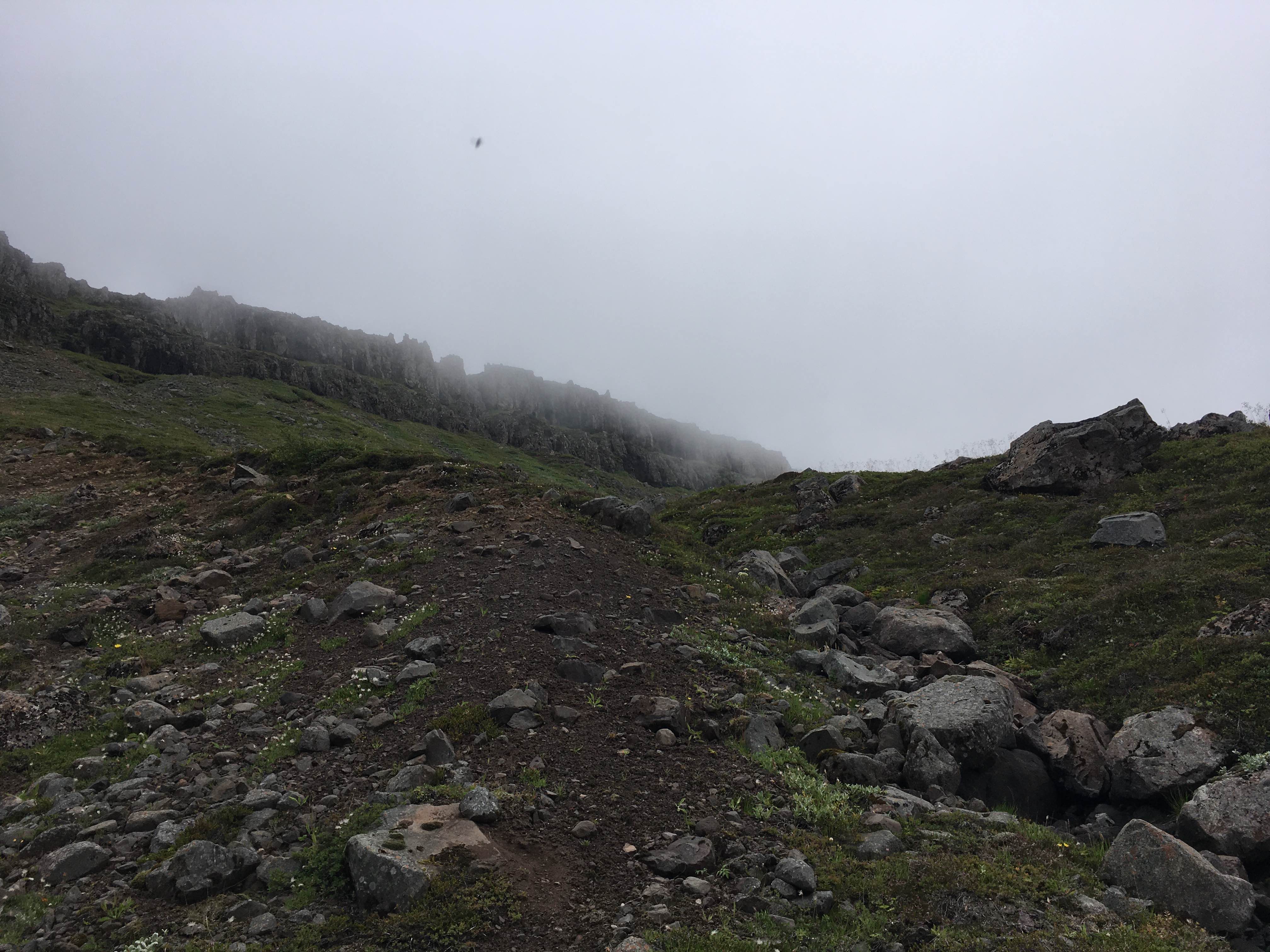
At what time of the year did you go?
I went in August. At the beginning of the month, it stayed light until around midnight, and then the sun would go all the way down. And then by the end of my time there, it was getting dark earlier and earlier and earlier, and there was more of a proper night time. That was in summer of 2024, and the record was finished about a year before it came out.
Since then, I've already started writing new songs and working on stuff. But it's still nice to reflect on the time I had there.
When you listen to Waiting Room, does it transport you back to Iceland, or have you since filled it up with different memories?
You know, I don't really listen to it very often. I probably haven't listened to it outside of the context of playing these songs live. And that feels like a very immediate thing. It doesn't really send me back into thinking about the past, except maybe perhaps through the lyrics. I do feel the lyrics in the moment and remember where they came from. But it does feel kind of outside of me, outside of my body. I do think it's good that other people take it in to themselves and make it project their lives, because that's what music is about.
Waiting Room is out now on The Flenser.
Kathryn Mohr performs at Le Guess Who? 2025 on Saturday, 8 November. Also performing at the festival are a.o. Julianna Barwick, Semiratruth, Luisa Almaguer, and many more.
